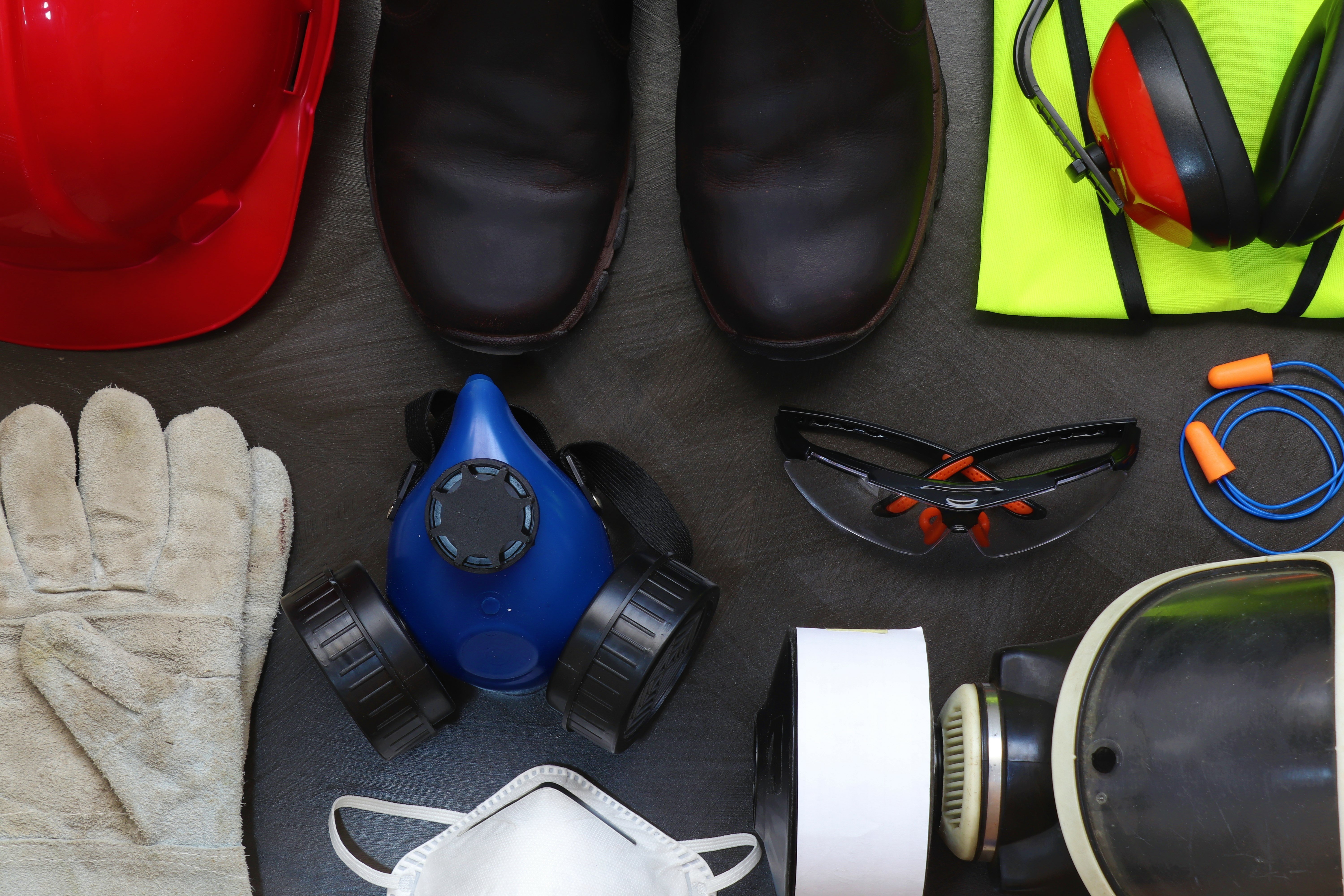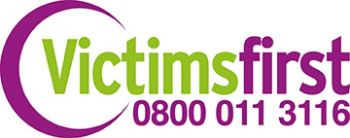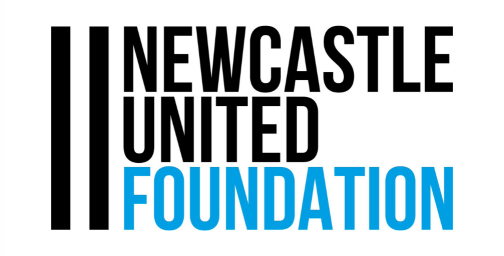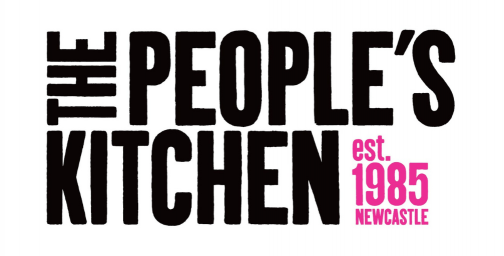
A Guide to Personal Protective Equipment (PPE) Safety at Work

Personal Protective Equipment (PPE) is equipment that workers can use or wear to guard against risks in the working environment. For instance, workers use items like helmets, gloves, and hi-vis clothing on a construction site staff, while in a laboratory you will often find technicians using safety goggles, masks, and coveralls.
PPE can range from basic protective clothing, like gloves, helmets, and footwear, to specialised gear like fall harnesses or respirators. However, they all have the same thing in common: safeguarding the wearer from injury or other health issues. In any workplace, there are risks that could cause injury or illness to employees. Under UK law, it is the duty of the employer to make sure that all reasonable precautions are taken to remove or reduce this risk to staff, taking the form of preventative or protective measures.
PPE plays a role as the vital last line of defence when it comes to protecting staff in the workplace as it is relied upon to protect or limit injury when preventative measures have failed. If you're new to PPE safety, this guide aims to introduce the laws around it, discuss why its important, then help you choose the right equipment for your own business.
We'll look at:
- What is PPE?
- What isn't PPE?
- What are the Personal Protective Equipment Regulations 2002?
- Why is PPE important?
- Who is responsible for PPE?
- When should PPE be used?
- How to choose the right PPE for your business
- Types of PPE
- How should I provide PPE training?
- How should I store and maintain my PPE
- Choose Custom Planet for your PPE essentials
What is PPE?
Personal Protective Equipment (PPE) is equipment that workers can use or wear to guard against risks in the working environment. For instance, workers use items like helmets, gloves, and hi-vis clothing on a construction site, while in a laboratory you will often find technicians using safety goggles, masks, and coveralls.
PPE can range from basic protective clothing, like gloves, helmets, and footwear, to specialised gear like fall harnesses or respirators. However, they all have the same thing in common: safeguarding the wearer from injury or other health issues.
In any workplace, there are risks that could cause injury or illness to employees. Under UK law, it is the duty of the employer to make sure that all reasonable precautions are taken to remove or reduce this risk to staff, taking the form of preventative or protective measures.
What are the PPE regulations?
In the UK, the use of PPE is governed by the Personal Protective Equipment at Regulations 2002, which set out the requirements that must be met by both the employer and the employee. It defines that, as an employer, you have a responsibility to provide PPE for your workforce as part of your duty of care.
These PPE regulations set out that PPE equipment is a last resort for managing risk in the workplace, and you must give priority to other engineering controls and safe systems of work. However, even when you have carried out a thorough risk assessment and put effective measures in place, there are still likely to be remaining hazards. This is where PPE is used to protect when all else has failed.
The PPE regulations also require that:
- PPE needs to be properly assessed before it's used for the first time to ensure it is up to the task of protecting employees.
- All PPE needs to be maintained and stored in the right way, to ensure it does not develop a fault and is always on hand when needed.
- PPE needs to be provided to employees with suitable instructions on how to use it safely.
- PPE must be used correctly by your workforce.
Note: Though many types of specialist equipment can be classed as PPE, such as hearing and respiratory protection, they may not be covered by the regulations discussed in this guide. This is because there is more specific legislation that applies. At the same time, you need to ensure that they are compatible with your other PPE, so we will still cover them briefly in this guide.
Please see the following for further details:
- The Control of Noise at Work Regulations 2005
- The Ionising Radiations Regulations 1999
- The Control of Asbestos Regulations 2012
- The Control of Substances Hazardous to Health Regulations 2002
- The Control of Lead at Work Regulations 2002
Employees' responsibilities for PPE
As well as setting out the duties of the employer for PPE, the Regulations also detail what employees' responsibilities for PPE are. They set out what your employees must do to ensure PPE is used correctly. Your staff are required to:
- Use any PPE items provided to them as instructed or trained.
- Ensure that any equipment is returned to the designated storage location after use, unless otherwise agreed (some items, like clothing or footwear, are impractical to return every time).
- Take proper care of the PPE, and report any faults or loss as soon as they become aware of them.
What is not included as PPE?
There exists a range of items that do not qualify as PPE. This includes regular work attire or uniforms that lack specific design elements aimed at safeguarding the wearer's health or safety, such as garments intended solely for maintaining food hygiene standards.
Additionally, equipment intended for protection during public road travel, such as motorcycle or bicycle helmets, along with gear used in competitive sports, falls outside the scope of PPE - although exceptions apply for protective gear worn by sports instructors.
Moreover, any provision used for self-defence, deterrence, or risk identification, such as truncheons or CS gas canisters as employed by law enforcement or military personnel, are not considered PPE. However, protective gear such as helmets, body armour, and similar items designed to shield staff from physical violence are exceptions.
Lastly, portable devices used for detecting and signalling hazards, such as radiation-detecting badges or personal gas detectors, do not fall under the classification of PPE.
Why is PPE important?
PPE is important because it forms a vital last line of defence against injury. Even though the Regulations insist PPE must be a last resort for safeguarding employees, that doesn't make it any less essential. Providing PPE to your workforce is required by law, and for good reason.
There are some elements of risk in the workplace that simply can't be removed completely, and PPE can make sure that, should the worst happen, your employees are protected. Practising good PPE safety can be the difference between good health and injury should an accident occur.
Some of the potential injuries and risks that PPE can protect your staff from include:
- Head: Falling materials, bumps, trips and falls.
- Feet: Falling materials, trips and falls.
- Eyes: Loose particles, liquid spillages.
- Skin: Loose particles, liquid spillages, extreme temperatures.
- Body: Trips and falls, extreme temperatures.
- Lungs: Airborne particulate matter, noxious gases.
What are the downsides of PPE?
The use of PPE does, in fact, imply certain downsides. Firstly, it primarily safeguards only the individual wearer, rather than extending protection to everyone in the workplace. Additionally, PPE effectiveness relies heavily on correct fitting, proper maintenance, and appropriate usage, which can pose challenges in real-world scenarios. Furthermore, PPE may restrict visibility and mobility, potentially impeding tasks or response times.
There's also an ongoing debate regarding the choice between reusable and disposable PPE. Reusable PPE, while economical, carries the risk of contamination or infection if not thoroughly cleaned and disinfected after each use. On the other hand, disposable PPE eliminates this risk by being discarded after use, but it may compromise on durability and quality.
Despite these drawbacks, PPE remains a legally mandated control measure, emphasising the importance of its adoption in workplaces. Ultimately, prioritising the proper use of PPE is essential for mitigating various work-related risks and ensuring the safety of employees.
Who is responsible for PPE?
As part of your care of duty as an employer, you must ensure that PPE is provided where needed and that your staff are trained to use it. You need to make sure that the equipment is readily available for easy access when it is needed, or your employees must have clear instruction on where it is stored.
You can't charge your employees for the PPE that they need to do their job, either. Make sure that you budget for enough equipment, so that everyone who requires it can access it at any time.
While the employer bears responsibility for providing PPE and training for its use, it's important to remember that your employees have responsibilities to use it correctly, report on faults, and ensure it is stored using the facilities you've provided.
When should PPE be used?
PPE should be used for any job or in any environment where you have implemented reasonable measures to remove or reduce risk, but there are still potential hazards to your workforce.
For instance, if work needs to be carried out on a light fixture in a warehouse, you may have already installed a winch to lower it to ground level, removing the major risk of working at height. However, there may still be hazards associated with raising and lowering the fixture, as well as work with tools and metal parts, so hard hats and gloves should be worn as a precaution.
As we've mentioned, your employees have the responsibility of using PPE equipment when required. Therefore, effort is needed on both parts to ensure that PPE is used in the right place and the right time to maximise safety at work.
How to choose the right PPE for your business
When it comes to choosing the right PPE for your business, you need to consider carefully what items your workforce need. Not only do the Regulations require you to do this as part of your duty of care, but doing so will make sure that your staff are properly kitted out any risk of illness and injury is minimised.
To begin identifying who needs PPE and what type of risk they need protection from, ask yourself the following questions:
- Who is exposed to risk in your workplace and what is the risk?
- How long and how often are they at risk?
- How severe is the level of risk?
Once you've decided what types of risk you will need to protect against, you can start thinking about what type of PPE you need to invest in for your workforce. You will want to consider the following points when deciding if PPE is suitable or not:
- Is the PPE appropriate for the risks you have identified? For example, the heat rating on a pair of gloves should be high enough for the task at hand.
- Is the PPE appropriate for the job? For example, if the equipment needs to be worn for a significant amount of time, it needs to be comfortable and not too heavy.
- Where more than one item of PPE is required, are your choices compatible? If they don't fit well together, it could cause discomfort or hinder performance.
- Does the PPE have many sizes available, or can it be adjusted? For work that requires close-fitting equipment, a one-size option probably won't be adequate.
- Have you thought about the health requirements of those who will be using the PPE? If you have staff that require special allowances, standard PPE might not be adequate.
- Have considered asking your workforce about what type of PPE they would prefer? If you allow their input in the decision-making process, they will be more likely to use it properly.
You should make sure that any PPE you are considering has a CE Marking to show it complies with the health, safety, and environmental protection standards for products sold within the European Economic Area (EEA). This is also a requirement of the 2002 PPE Regulations.
Types of PPE: What should you choose?
In this section, we will take a closer look at some of the most common types of PPE that you may want to consider, typical industries, and hazards they can protect against.
Hard hats, safety helmets, and bump camps
Protects from: Falling objects, head bumps, and other blows to the head.
Typical industries:Construction, engineering, factories, tradesmen.
Where there is a risk of falling objects or bumping your head, a hard hat, safety helmet or bump cap is an essential bit of PPE for your employees. There are also specialist helmets on the market that can offer additional faceguards or hearing protection.
Almost every construction site in the country has the requirement for employees to wear a hard hat, so it's going to be an essential purchase for your on-site workforce. Most models feature a suspension band inside to spread any impact over the top of the head, so there is less chance of injury. Many are also size-adjustable, so they can be altered for the wearer's comfort.
Bump caps are lightweight hats that have an internal bump guard in case your head impacts a hard surface. Though they offer less protection than hard hats and other safety helmets, they are more suitable for jobs where it is impractical to wear full headgear. They usually have adjustable sizing for extra comfort, too.
At Custom Planet, we have a range of high-quality hard hats, safety helmets, and bump caps to choose from, all of which can be customised with your company's logo or branding. We have a variety of colours available to cater to your site's regulations.
Safety glasses and goggles
Protects from: Harmful splashes, particles, gases, and vapour.
Typical industries: Engineering, metalworking, lab work.
Safety and goggles are designed to shield your eyes from anything that might cause them damage at work. This can include splashes from harmful liquids, loose particles in the air, or gases that can prove dangerous to the naked eye. Not only will these essential pieces of eyewear keep foreign objects out of your eye, but they will also protect them from infection and burning.
When you are looking at eye protection for your business, remember to take into account the kind of activity that they will be used for: you will need to ensure the glasses or googles has the right impact, dust, splash, or molten metal rating for the task. Safety goggles often have a form-fitted shape and an adjustable strap, which makes them ideal for work where a tight seal around the eye is required. One of the most important things to consider when choosing goggles is whether they are comfortable or not, especially if your employees need to wear them regularly for long periods of time.
Safety glasses are more lightweight than goggles, but can still provide a high level of protection from potential projectiles. They don't have the complete seal like goggles, but your workforce will find they are much more convenient and comfortable to wear for prolonged periods of time.
If you are looking for premium-quality eyewear, we have a range of safety glasses and goggles at Custom Planet that meet the highest safety standards. If you need to kit your whole workforce out with new goggles or glasses, we offer discounted prices for bulk orders.
Ear defenders
Protects from: High noise levels.
Typical industries: Construction, music and entertainment, airport staff.
Ear defenders — sometimes known as muffs — are PPE designed to protect the wearer from extreme noises that may cause damage to their hearing. They make use of sound-isolating materials, such as acoustic foam, encased in a plastic or metal casing. Though usually worn on a headband, ear defenders can also be combined into a specialist helmet, and sometimes feature a built-in radio for improved communication.
The Control of Noise at Work Regulations 2005 dictate that employers must provide hearing protection if noise levels hit 85 decibels (daily or weekly average) and look into the impact of noise exposure on staff if it reaches 80 decibels. Ear defenders can play a key role in protecting your staff, so it's vital that you choose quality models that offer enough protection for the amount of noise in your workplace.
Here at Custom Planet, we stock a variety of ear defenders to help you meet your noise-at-work duties. Our products have been fully tested to industry standards. What's more, they're also lightweight and padded, allowing for prolonged usage without becoming uncomfortable or obscuring the task at hand. We can also print your logo or brand onto our ear defenders.
Respiratory protection equipment
Protects from: Harmful particles and gases, a lack of oxygen.
Typical industries: Engineering, woodworking, metal processing.
Respiratory protection equipment (RPE) protects your workforce from potentially hazardous particulate matter, such as gases, fumes, and airborne microorganisms, filtering them out to avoid any inhalation or infection. RPE can also be used when there is a lack of oxygen. Respirators are essential wear in a range of industries, from chemical engineering to law enforcement.
There is a wide variety of RPE, ranging from cheap single-use dust masks to reusable models with replaceable cartridges. If you aren't sure which equipment you need for your workforce, the HSE and NHS Scotland's RPE selector tool can help you identify which type will provide the appropriate level of protection for your employees.
Gloves
Protects from: Extreme temperatures, hazardous materials, hand injuries.
Typical industries: Decorating, carpentry, engineering.
Gloves are an essential item of PPE as they can protect your workforce from a huge variety of potential hazards. Whether you need rubber gloves to safeguard against chemical spillages, durable work gloves to shield hands from rough tool use, or insulated
gloves for your employees to wear in the cold, there will be an option to suit your needs.
When it comes to choosing PPE gloves, you need to consider whether they offer the right type of protection and are fit for purpose. For example, if the task at hand carries some risk of injury but requires some intricate work, you will want to choose a glove that offers enough defence while avoiding bulky materials that could get in the way. You should also think about whether the gloves are comfortable, especially if they need to be worn for a long time.
Here at Custom Planet, we stock industrial and work gloves to provide protection on the job, as well as thermal gloves for when cold-weather work is required. We've sourced these products from the best manufacturers around to offer you the best quality for your business. We can also print or embroider your gloves if you wish to have your company's branding displayed.
Overalls and bib and braces
Protects from: Harmful splashes, particles, gases, and vapour.
Typical industries: Chemical engineering, metalworking, carpentry.
Overalls are one-piece garments used to protect the wearer and their clothing from potential hazards in the workplace. They are a popular choice of PPE thanks to their practical design, which offers cover from head to toe, and for being very comfortable for prolonged wear. Disposable versions are also available for when hygiene is a priority.
Bib and braces are very similar to overalls, but they have a front bib panel and back brace straps instead of full back and arm coverage. They are often selected as PPE for jobs that require more movement or physical labour, or when full-length sleeves could get in the way of work.
Overalls and bibs and braces can be manufactured to include specialist properties, such as being flame-retardant, hi-vis, or waterproof, so they are used across a wide range of industries. If your workforce is regularly exposed to the risk of potential spills or leaks, then an overall or bib and brace could be the PPE garment for you.
Browse the range of overalls and bib and braces here at Custom Planet, where you will find a selection of quality garments for your workforce. We can completely customise all of our products, so you can add business branding or team member names to each item. This option is ideal if you are looking for overalls that can also double up as a work uniform.
Outerwear and cold-weather clothing
Protects from: Adverse weather, extreme temperatures.
Typical industries: Warehousing, event management, retail.
When your staff work outdoors or in an environment that regularly has a cold temperature, you will need to provide them with PPE to defend against the elements. Any clothing that you choose for this should be fit for purpose, comfortable, and offer the right level of protection.
There are a lot of options available in this area, and what you choose will depend on your business. For example, if you employ security staff who work outside, they will need clothing that is insulated and waterproof in case of adverse weather. On the other hand, if you have a workforce based indoors in a warehouse, you could select fleece jackets instead. You may also want to consider how the clothing looks as a uniform, especially if your staff have direct contact with customers.
Here at Custom Planet, we have a huge selection of PPE clothing that you can choose from, all of which can be customised with your business's branding, logo, or any other design. Our outerwear range has many waterproof and thermal options for staff working outdoors, while our workwear hoodies, fleeces, and trousers can be worn underneath as layers or on their own. We also stock base layers for even more warmth.
High-visibility and enhanced-visibility clothing
Protects from: Low visibility conditions, working in the dark.
Typical industries: Security, construction, rail.
If your employees work in environments that have low visibility (indoor and outdoor), or through the night, you will need to provide them with adequate high-visibility clothing for the job. These garments feature bright, fluorescent colouring and prominent reflective strips to make the wearer as obvious as possible to others in poor lighting conditions. The most common hi-vis clothing items are jackets, vests, and trousers.
High-visibility clothing for work is defined by the European standard BS EN ISO 20471, which sets rules on visual performance and durability to make sure the wearer is visible against different backgrounds in all weathers and lighting. The standard provides three approved clothing templates that manufacturers can choose from when manufacturing their garments to ensure that all safety requirements are met.
If your employees work in a lower-risk environment but you still want to provide them with added visibility, you can opt for enhanced-visibility clothing. This type of garment doesn't conform to the standards of hi-vis wear, but still has an element of reflectivity or fluorescent colouring.
At Custom Planet, we have a great selection of both hi-vis and enhanced visibility workwear, with a variety of coats, jackets, vests, trousers, and more to choose from. We can print or embroider onto these garments, so you can add a logo or company branding so your staff are identifiable.
Safety boots and shoes
Protects from: Cut and puncture wounds, electric shock, falling objects, slips and trips.
Typical industries: Construction, engineering, oil rigging.
Safety boots and shoes are a durable type of PPE footwear that can protect the wearer's feet from hazards in the workplace. Typical features of these shoes include a steel-toe cap, a rubberised sole with enhanced grip, tough body material, and extra padding. There are many types of safety shoes and boots, ranging from trainers to full rigger boots, and all will offer a different level of protection.
There are three testing standards that shoes and boots must meet. Safety footwear offers the highest level of protection to the wearer, and must meet the most rigorous BS EN ISO 20345:2011 standard. Then there is protective footwear, which corresponds to BS EN ISO 20346:2014; and occupational footwear, which is tested to the BS EN ISO 20347:2012 standard.
Differing levels of protection make some footwear more suitable for certain industries and environments, so this should be taken into account when you are selecting for your workforce. You will need to consider all of the potential risks in your working environment, then purchase a shoe that covers all the bases.
You can find a full range of safety boots and shoes here at Custom Planet. We stock footwear to suit a variety of industries, from catering and healthcare all the way to construction and oil rigs. Our selection includes shoes, boots, clogs, wellies, and more. We offer bulk order discounts too, so you can save money if you need to buy footwear for a large number of employees.
How should I provide PPE training?
Once you've stocked up on your required PPE, you will need to issue it to your staff and provide training on how it should be used, maintained, and stored. This is a key part of providing safety equipment for your staff, and your responsibilities don't end when you've given it out for use.
You will need to consider the following points when training staff:
- Make sure that all relevant staff are aware of why the PPE is needed. With a greater understanding of the reasons for the equipment and how it can benefit them, your workforce is likelier to get straight on board using it.
- Provide training for staff on how to use the PPE and when it should be used. As well as the employees that will be using the equipment directly, ensure you include their managers and supervisors, as they will need to check that it is being utilised correctly.
- Take the time to include information about how the PPE should be cleaned maintained, as well as any details about how to spot whether an item needs to be repaired or replaced.
- Make sure that there is a system in place to report faults or loss of equipment, as this will ensure that everyone has access to fully functioning PPE at all times.
- Stress to your staff that PPE should be worn for the duration of the job, no matter how small and no shortcuts should be taken if it will only take a few minutes.
- Be vigilant and continuously check that PPE is being used and it is being used in the way that you have requested. Be sure to investigate any instances where it hasn't been used and provide retraining if necessary.
- Supplement your training with safety signs that remind staff to use PPE, and show where the right equipment can be accessed. This is also useful if you often have visitors or contractors in your workplace.
How should I store and maintain my PPE?
Your staff will need to be trained to correctly store PPE and be able to spot a fault if one should occur. However, there are a few more points that you will need to consider when it comes to storage and maintenance:
Storage
- You will need to provide adequate storage facilities for PPE when it's not in use to make sure it always accessible and kept in good condition. This may not be necessary for PPE that your employees can take away with them, like a boiler suit or safety boots.
- Your storage facilities don't need to be overly complex for most items of PPE. For example, you may provide a rail or pegs where clothes can be hung, or individual cases for safety goggles. But, you may wish to consider specialist storage for certain items, like respirators.
- Any storage options you provide must be secure enough to protect against loss, damage, damp, and direct sunlight.
- You will need to provide alternative storage if there is a chance that PPE might become contaminated.
Maintenance
- Make sure you have an efficient system for reporting and replacing PPE when it fails, as this is key to keeping your workforce fully protected into the future.
- Always stick to any maintenance instructions or schedules that come from the manufacturer. Paying attention to information like recommended replacement periods and shelf lives will make sure you always have PPE in the best condition.
- From their training, your staff should be able to spot faults with PPE, as well as carry out simple maintenance and cleaning of the equipment. However, you should make sure that any intricate repairs are carried out by someone with competence for safety reasons.
- Your staff aren't responsible for covering the cost of PPE maintenance, as this falls to you, the employer.
What should you do if your PPE is damaged?
If your staff encounter damaged PPE then it’s crucial for them to immediately report this to you. Followingly, ensure that the damaged PPE is promptly replaced with a functioning and undamaged alternative.
How do I correctly dispose of PPE?
Proper disposal of PPE, particularly non-reusable types, is imperative to prevent risks. Even after brief periods of use, both disposable and damaged reusable PPE can harbour contaminants and should be handled with care. Dispose of these items exclusively in designated waste bags, making sure they are securely sealed to prevent any possible spread of contaminants.
Choose Custom Planet for your PPE essentials
Here at Custom Planet, we stock a huge range of PPE and workwear that could prove essential to your business. We understand the importance of providing the right equipment to your workforce, and that's why we only source our products from the most trustworthy and respected brands.
What's more, we also understand the value of advertising your business when on the job, and that's why we offer a variety of customisation options to make your PPE immediately recognisable. Branded equipment can bring extra value to your business, as it looks more professional and makes your staff more identifiable to customers. What's more, being able to add details like staff names to garments can ensure that important personal equipment doesn't get mixed up or lost.
Find out more about how our screen printing, digital printing, embroidery, and garment finishing services can present a unified and smart brand across all aspects of your workwear.
If you're looking to order PPE for your business, feel free to get in touch with our team who will be happy to discuss your options.


































